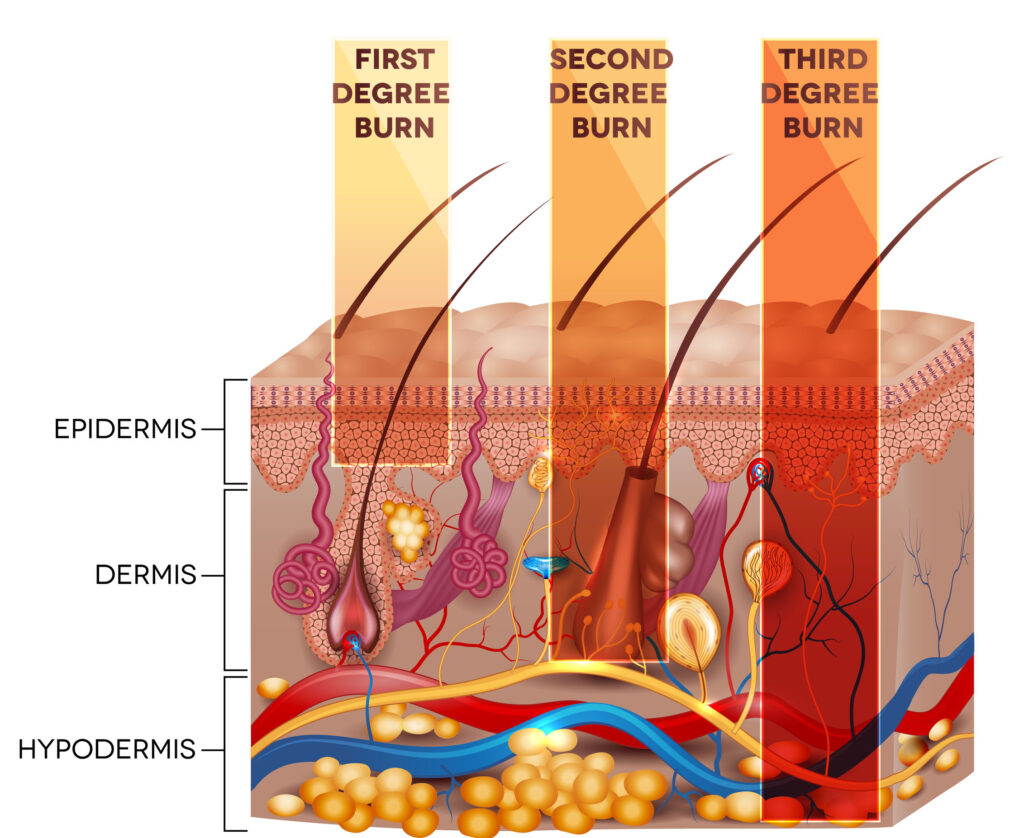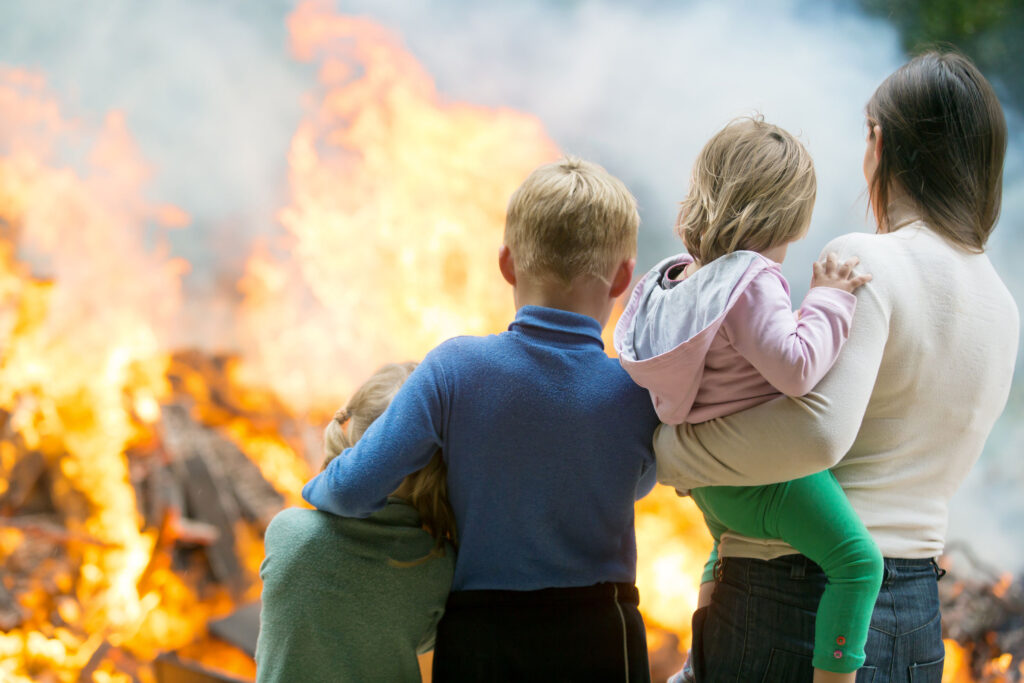October 8 marks the beginning of Fire Prevention Week in 2023 and Lerner and Rowe Injury Attorneys is highlighting the importance of burn injury prevention in Arizona. There are many misconceptions about burn injuries and our team is using Fire Prevention Week to help people understand how serious burns can be. The first step is understanding how burns are caused. Find out the most common causes of burn injury and learn crucial safety tips for avoiding them in this guide from our Phoenix burn injury lawyers.
Scope of The Problem: Burn Injuries in the United States
The American Burn Association (ABA) estimates as many as 486,000 people receive medical treatment for burns every year in the United States. In Phoenix alone, the Arizona Burn Center treats more than 1,000 inpatients, 2,500 emergency room patients, and 5,000 outpatients for burn injuries annually.
Types of Burns
There are several basic mechanisms of injury when it comes to burns, and they can result from a wide variety of accidents at home, in the workplace, and elsewhere.
- Thermal burns are very common and occur when your skin comes into contact with something that is very hot. This can include hot metals, scalding liquids, steam, or an open flame. House fires and fires resulting from car accidents can lead to open flame thermal burns.
- Chemical burns are caused by direct skin contact with powerful chemicals such as acids, solvents, or detergents.Chemical burns commonly result from contact with car battery acid, bleach, ammonia, and certain teeth whitening products.
- Electrical burns happen as an electrical current passes through human tissue, causing burns throughout the body.
- Radiation burns are most commonly experienced as a sunburn, but you can also suffer radiation burns from X-ray exposure and radiation therapy.
- Friction burns are caused by both abrasions and heat. Minor friction burns may result from carpet burn, while more serious burns can occur after bicycle or motorcycle accidents.
Burn Severity
Burns are also categorized based on how deep the burn penetrates into the body.
- First degree burns are mild, affecting only the top layers of the skin.
- Second degree burns go deeper and can cause redness, swelling, blisters, and will be painful to the touch.
- Third degree burns destroy two layers of the skin, often leave scars, and can cause nerve damage.
- Fourth degree burns are life-threatening because they often penetrate past the skin into bones, muscles, and tendons. Any severe burns present the risk of complications such as infection and organ damage.
Common Causes of Burn Injury Deaths
Burn injuries are among the leading causes of unintentional injury death for children under the age of 14 and adults over the age of 65. But why are these age groups so vulnerable to burn-related deaths, and what is causing their burn injuries in the first place?
House Fires
House fires are one of the most common causes of burn injury that result in death.The National Fire Protection Association (NFPA) reports that fire departments responded to approximately 1,291,500 house fires in 2019. As many as 3,700 civilians were killed and 16,600 were injured.
The top causes of house fires include cooking mishaps, faulty or improperly-used heating equipment, electrical hazards, smoking indoors, and knocked over or forgotten candles.
Vehicle Fires
Vehicle fires alone were responsible for 17% of fire deaths in 2019. Vehicle fires may be caused by poor maintenance, defective parts, or car accidents. Young children and older adults may become more quickly overwhelmed by smoke inhalation. They may also have a more difficult time escaping a house or vehicle fire than younger or middle-aged adults due to size and mobility.
How to Prevent Burn Injuries
Of course, the best way to prevent burn injuries is to prevent fires altogether. Many house or vehicle fires are caused by carelessness or even negligence, so be sure to take these precautions to keep your home and vehicle safe:
- Make sure your home has working smoke detectors, and change the batteries once a year. You should also replace the entire unit every ten years.
- Never leave a candle burning unattended, near flammable materials, or on an unsteady surface.
- Always supervise children in the kitchen, and never leave the kitchen while the stove is on.
- Never smoke indoors. Always make sure your cigarette is extinguished and dispose of it responsibly afterwards.
- Have your vehicle inspected and serviced regularly, and keep an eye out for any vehicle-related recalls.
- Learn how to use a fire extinguisher with the PASS (Pull, Aim, Squeeze, Sweep) method. Keep your fire extinguisher nearby and make sure you have it inspected by a professional once a year.
Contacting a Lawyer After a Burn Injury
Many burn injuries result from unfortunate accidents, some of which may not have been completely preventable. However, if you or a loved one has suffered a life-altering burn injury due to the reckless or negligent actions of another person, manufacturer, or company, you may be eligible for compensation.
To find out more about your legal options, contact a Phoenix injury attorney at Lerner and Rowe Injury Attorneys today. We’ll arrange a free no obligation consultation to go over the details of your case and determine what compensation may be available to you and your family. If your loved one died as a result of their burn injuries, our Arizona wrongful death lawyers may also be able to assist you.
Call us today at 602-977-1900, speak to a representative online via LiveChat, or send us the details of your accident using this form for a free case review. Remember, we charge you nothing unless we make a recovery on your behalf and the call is always free.





